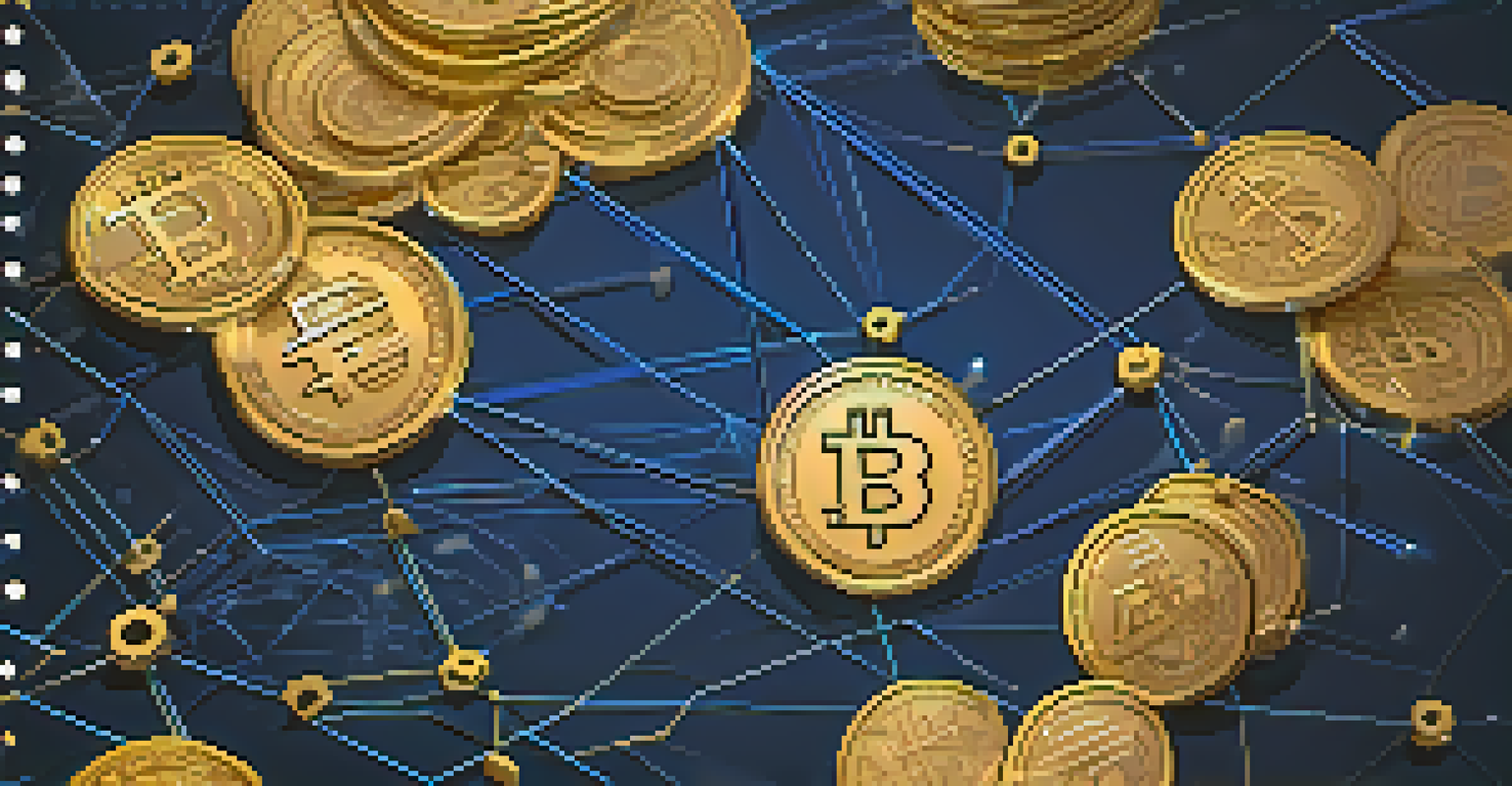Decentralized Finance (DeFi): A Trend Reshaping Financial Systems

What is Decentralized Finance (DeFi) and Why It Matters
Decentralized Finance, or DeFi, refers to a financial system built on blockchain technology that operates without central authorities. This innovative approach allows users to engage in financial transactions directly, using smart contracts and decentralized applications. By eliminating intermediaries, DeFi aims to make financial services more accessible, transparent, and efficient.
Decentralized finance is not just a trend; it’s a movement that fundamentally changes how we understand and use money.
Imagine a world where you can lend, borrow, or trade without waiting for bank approvals or paying hefty fees. DeFi opens up this possibility by leveraging cryptocurrencies and blockchain networks, enabling peer-to-peer transactions that are often faster and cheaper than traditional methods. This shift not only democratizes finance but also empowers individuals by giving them control over their own assets.
As DeFi continues to grow, it poses a challenge to conventional financial institutions, pushing them to innovate and adapt. The rise of DeFi represents a significant cultural shift in how we think about money, investments, and financial security, making it essential for anyone interested in the future of finance to understand its potential impact.
Key Components of the DeFi Ecosystem
The DeFi ecosystem is built around several key components, including lending platforms, decentralized exchanges, and stablecoins. Lending platforms allow users to lend and borrow assets without intermediaries, often earning interest on their deposits. Decentralized exchanges (DEXs) enable users to trade cryptocurrencies directly with one another, enhancing liquidity and reducing costs.

Stablecoins play a crucial role in DeFi by providing a stable value in an otherwise volatile cryptocurrency market. These digital currencies are pegged to real-world assets, like the US dollar, making them ideal for transactions and savings within the DeFi space. By integrating these components, DeFi creates a robust financial system that offers various services traditionally provided by banks.
DeFi Empowers Financial Access
Decentralized Finance (DeFi) eliminates intermediaries, enabling individuals worldwide to access financial services directly and take control of their assets.
Another essential aspect of DeFi is governance tokens, which give users a say in the protocols and decisions of DeFi platforms. This participatory approach empowers users to shape the future of the services they use, fostering a sense of community and shared responsibility within the ecosystem.
Benefits of DeFi: Accessibility and Empowerment
One of the most significant benefits of DeFi is its accessibility. With just an internet connection and a digital wallet, anyone can participate in financial activities, regardless of their geographical location or financial status. This inclusivity opens up opportunities for individuals in underserved regions who may not have access to traditional banking services.
The future of finance is decentralized, and the tools we create today will shape the financial landscape of tomorrow.
DeFi also empowers users by providing them with greater control over their financial assets. In contrast to traditional finance, where banks manage your funds, DeFi allows you to be your own bank. This autonomy fosters financial literacy and encourages individuals to take charge of their financial futures, making informed decisions about their investments and savings.
Moreover, the transparency inherent in DeFi protocols means users can verify transactions and understand how their funds are being used. This level of transparency builds trust and encourages more people to engage in financial activities, ultimately driving the growth of the DeFi movement.
Risks and Challenges in the DeFi Space
While DeFi presents numerous advantages, it also comes with its share of risks and challenges. One of the primary concerns is the potential for smart contract vulnerabilities, which can be exploited by malicious actors. A flaw in the code could lead to significant financial losses, highlighting the importance of rigorous testing and audits within the DeFi ecosystem.
Another challenge is the regulatory ambiguity surrounding DeFi platforms. As governments work to understand and regulate this rapidly evolving space, users may face uncertainty regarding the legality and security of their activities. Navigating this landscape requires awareness and caution, as regulations could impact the future of DeFi.
Stablecoins Enhance DeFi Stability
By pegging their value to traditional assets, stablecoins provide a reliable medium of exchange, minimizing risks associated with cryptocurrency volatility.
Additionally, the volatility of cryptocurrencies poses a risk to users engaged in DeFi. Price fluctuations can lead to unexpected losses, especially for those who are new to the crypto space. It's crucial for users to educate themselves about the risks involved and only invest what they can afford to lose.
The Role of Stablecoins in the DeFi Revolution
Stablecoins play a pivotal role in the DeFi landscape by providing a reliable medium of exchange within a volatile market. By pegging their value to traditional currencies or assets, stablecoins enable users to transact without the fear of price swings that often accompany cryptocurrencies. This stability is crucial for lending and borrowing activities, as it ensures predictable returns and minimized risks.
Moreover, stablecoins facilitate easier entry and exit points for users looking to engage with DeFi platforms. For example, someone can convert their fiat currency into a stablecoin, trade it on a decentralized exchange, and then return to fiat without worrying about drastic price changes. This seamless process encourages more users to explore the DeFi space and take advantage of its offerings.
As stablecoins continue to gain traction, they are becoming integral to the adoption of DeFi. Their ability to maintain value while offering the benefits of cryptocurrency positions them as a bridge between traditional finance and the burgeoning decentralized financial ecosystem.
DeFi vs. Traditional Finance: A Comparative Overview
When comparing DeFi to traditional finance, the differences become stark. Traditional financial systems often rely on intermediaries like banks and brokers, resulting in longer transaction times and higher fees. In contrast, DeFi operates on a decentralized model, allowing users to conduct transactions directly, often at a fraction of the cost and time.
Another key distinction lies in transparency. In traditional finance, processes can be opaque, leaving customers in the dark about how their money is managed. DeFi, on the other hand, operates on public blockchains, enabling users to audit transactions and protocols easily. This level of transparency fosters trust and accountability within the community.
DeFi Challenges Traditional Finance
DeFi's decentralized model contrasts sharply with traditional finance, pushing conventional institutions to innovate while offering users greater transparency and lower costs.
However, it’s essential to recognize that DeFi is not without its challenges, just like traditional finance. Users must navigate risks such as smart contract vulnerabilities and regulatory uncertainties. Ultimately, while DeFi offers exciting possibilities, it’s crucial to approach it with awareness and caution.
The Future of DeFi: Trends and Predictions
Looking ahead, the future of DeFi appears bright, with many experts predicting continued growth and innovation in this space. As more individuals and institutions recognize the benefits of decentralized finance, we can expect increased adoption and integration into mainstream financial systems. This trend could lead to a more inclusive and efficient financial landscape worldwide.
Moreover, advancements in technology, such as layer-2 solutions and interoperability protocols, are likely to enhance the DeFi experience. These innovations aim to improve transaction speeds and reduce costs, making DeFi even more appealing to users. As these technologies develop, they will address some of the current limitations faced by the DeFi community.

Ultimately, the evolution of DeFi could redefine our understanding of finance, pushing traditional institutions to adapt or risk becoming obsolete. As we embrace this new era of financial empowerment, it’s crucial for users to stay informed and engaged, ensuring they make the most of the opportunities that DeFi presents.